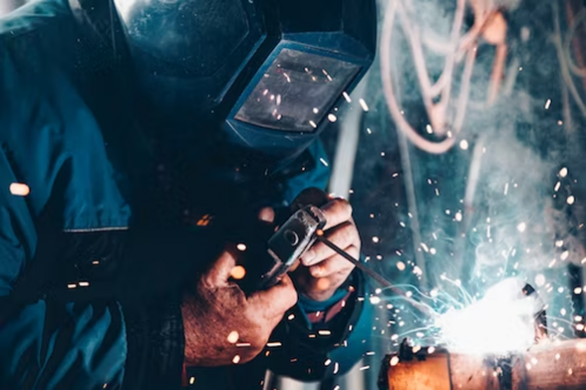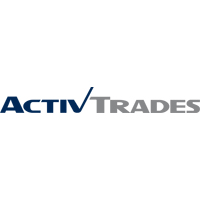Creating a safe work environment should be the top priority for employers. Regardless of the industry, you have to be aware that a dangerous situation can occur anytime, anywhere. To prevent an emergency, you and your employees need to understand the risks you are exposed when completing your daily tasks. Even if you are used to the strong smell of the substance you are handling or the heavy lifting of machinery, these aspects represent a hazard, and they could have an irreparable impact on your health.

1. Employee safety training
It’s crucial to raise awareness about the potential hazards and risks in your workplace for your employees. Employee safety training is mandatory and employers have to introduce the staff members to the protocols and practices that will help mitigate the risks of hazards that can cause serious injuries. With proper training, workers will be able to handle machines and equipment, applying adequate technical skills to avoid accidents. The general safety training program should include basic procedures for a potential emergency situation, for example, first aid, fire-fighting procedures and evacuation protocols. Besides the general introduction for extreme scenarios, your employees need to be trained on how to use machinery safely, how to lift weights without hurting themselves and how to use personal protection equipment to prevent a harmful situation.
2. Mitigate workplace hazards
Hazard occurs when a work environment can cause illness, injury or even death. It’s crucial to identify the sources of potential danger and rearrange the workspace to isolate or eliminate the areas where the risk of harm exists. These are the most common types of hazards that you could encounter in your workplace:
- Safety hazards: includes the danger of handling machinery, electrical hazards or falls, trips and slips of the employee.
- Biological hazards: working with chemical substances, gases, dangerous liquids, toxic plants or infectious diseases.
- Physical hazards, such as radiation, ultraviolet or sun rays, are considered factors for a dangerous work environment.
- Ergonomic hazards: include manual jobs that require workers to put a strain on their body, lifting heavy materials or sitting for a long time with bad posture.
It’s not possible to eliminate entirely potentially harmful elements if they are essential to get your work done. Still, it is important to be aware of their presence and comply with their handling rules in order to mitigate the side effects that a dangerous material or environment could have. Despite the attention you pay in order to avert a harmful situation, sometimes danger comes unexpectedly, and you or your employees might get hurt. Getting compensation for a work incident is a solution that experts at https://www.personalinjuryclaimsuk.org.uk/ suggest through a work injury claim. To minimise the hazards in your workplace, this is what you can do:
- Start by replacing damaged equipment that could endanger their functionality
- Isolate the hazardous working areas by installing barriers in order to contain the danger
- Make sure every chemical substance or dangerous equipment has a hazard label and instructions for how to handle it
- Rotate your working staff for the tasks that require a lot of attention due to the dangerous substances used, to ensure they spend less time through the toxic fumes.
- Use protective equipment like biohazards uniforms, protective glasses, gloves, helmets etc.
- Substitute chemical substances: you can find environment-friendly options that are less toxic.
3. Create an emergency plan
Bain-storming the worst-case scenario helps you create an emergency plan for unforeseen situations that can threaten your work life significantly. An emergency action plan must include a map of the building, indicating all the emergency exits and a route assignment for every area in the construction, in order to lead workers to the nearest evacuation door. The emergency exits have to be labelled as such, and exit signs must be visible. Also, it is essential to establish with your staff an action plan for different types of emergencies; consider assigning them specific roles. For example, if an uncontrollable fire occurs, the firefighter is the one who finds the fire source; the assistant will help the firefighter with the necessary equipment; the first aider provides first aid to injured colleagues; the communicator calls the firefighting team and informs management. Communication in an emergency situation is the key to saving your life and others.
- Promote regular safety inspections
Safety auditors must inspect your workplace at least once a year to evaluate if the company complies with safety regulations. These inspections can be conducted with a checklist for general observation of specific instruments and items used frequently (work equipment), or auditors can test workers’ knowledge by questioning them about their workplace risks and asking to identify hazards on the building map, its emergency exits and related procedures. Also, an inspection will be required in the event of an incident in order to determine its cause and find solutions to prevent another similar situation.
- Maintain a clean and organised workplace
A crucial step in order to obtain a hazard-free workplace is maintaining it clean and tidy. Working in an organised space is essential to expose potential hazards and avoid getting harmed by unwanted objects. In a tidy work space, you have better control of the materials that you are handling and tools, as well as a floor clear of any obstacles will prevent tripping, falling or slipping and ensure a rapid evacuation. Besides the importance of a tidy space, it’s also essential to maintain your workplace clean; for example, spilt chemical substances and flammable materials can fuel a fire rapidly and degenerate into an emergency situation.
The bottom line
Workplace accidents are an ordinary reality for companies on a daily basis. This happens because of the need for more knowledge of employers about the potential hazards their employees are exposed to. It’s crucial to be trained for worst-case scenarios in order to prevent extensive damage and be prepared for unusual situations you might encounter on a basic day at work.

 Hot Features
Hot Features











